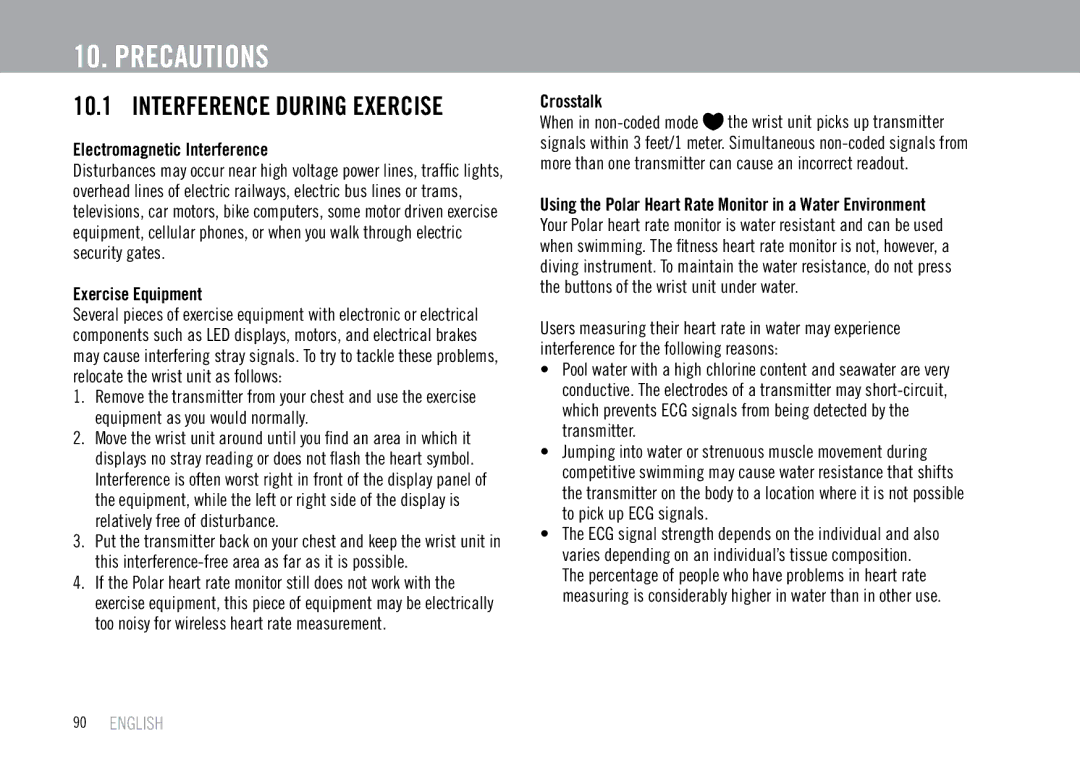10. Precautions
10.1 INTERFERENCE DURING EXERCISE
Electromagnetic Interference
Disturbances may occur near high voltage power lines, traffic lights, overhead lines of electric railways, electric bus lines or trams, televisions, car motors, bike computers, some motor driven exercise equipment, cellular phones, or when you walk through electric security gates.
Exercise Equipment
Several pieces of exercise equipment with electronic or electrical components such as LED displays, motors, and electrical brakes may cause interfering stray signals. To try to tackle these problems, relocate the wrist unit as follows:
1.Remove the transmitter from your chest and use the exercise equipment as you would normally.
2.Move the wrist unit around until you find an area in which it displays no stray reading or does not flash the heart symbol. Interference is often worst right in front of the display panel of the equipment, while the left or right side of the display is relatively free of disturbance.
3.Put the transmitter back on your chest and keep the wrist unit in this
4.If the Polar heart rate monitor still does not work with the exercise equipment, this piece of equipment may be electrically too noisy for wireless heart rate measurement.
Crosstalk
When in ![]() the wrist unit picks up transmitter signals within 3 feet/1 meter. Simultaneous
the wrist unit picks up transmitter signals within 3 feet/1 meter. Simultaneous
Using the Polar Heart Rate Monitor in a Water Environment Your Polar heart rate monitor is water resistant and can be used when swimming. The fitness heart rate monitor is not, however, a diving instrument. To maintain the water resistance, do not press the buttons of the wrist unit under water.
Users measuring their heart rate in water may experience interference for the following reasons:
•Pool water with a high chlorine content and seawater are very conductive. The electrodes of a transmitter may
•Jumping into water or strenuous muscle movement during competitive swimming may cause water resistance that shifts the transmitter on the body to a location where it is not possible to pick up ECG signals.
•The ECG signal strength depends on the individual and also varies depending on an individual’s tissue composition. The percentage of people who have problems in heart rate measuring is considerably higher in water than in other use.
